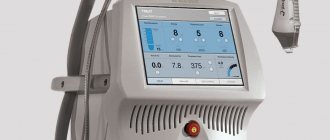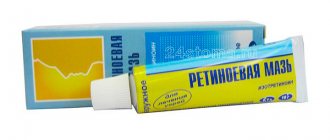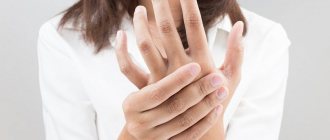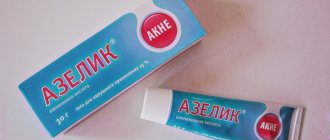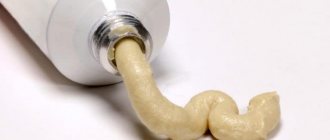Let's talk about it in more detail. In the medical literature, demodicosis is classified as acariasis - a disease caused by mites that occurs during the rapid reproduction of blackheads (mites of the Demodicidae family).
In Latin, the word for mite is Demodex, which is where the name of the disease comes from. When affecting the skin, the parasite usually accumulates in the canals of the sebaceous and cartilaginous epithelial cells of the eyelids or in the hair follicles of the eyelashes.
Many experts do not consider demodicosis a separate pathology. The bottom line is that demodex is present in everyone, but is excited only with extensive eye damage and poor hygiene.
Incredibly, demodicosis, or rather its source - mites - turns out to be useful for people. These arthropods feed on the stratum corneum of the skin, excellent at removing toxins and decomposition waste. With reduced immunity and other negative factors, ticks behave differently and cause complex health problems.
What is the risk of demodicosis?
Should you worry if you have been diagnosed with this? Of course not. The disease has long been studied by doctors and is quickly eliminated with simple effective drugs. Don’t be afraid if the parasite finds another “object” among your pets. After all, there are more dangerous eye problems. Therefore, when you hear the word “demodex”, don’t panic! The syndrome can be easily healed in adults and children.
The main thing you need to know is that conservative treatment of demodex prescribed by an ophthalmologist only smoothes out the visible symptoms of the lesion. But it is impossible to completely expel a tick from the body; it performs many important functions.
With the correct diagnosis and effective therapy, your illness will go away without a trace. No eyelash loss or eyelid scarring. There will only be a possibility of relapse and recurrence of demodicosis again. Usually, this does not happen in the majority of patients. Already having experience in treatment and knowing the routes of infection, people try to monitor hygiene and control immunity.
1.What is demodicosis and the factors that provoke it?
Demodicosis (demodex, skin mite)
microscopic mite Demodex folliculorum, which inhabits the sebaceous glands of the skin and hair follicles of the eyelids.
This parasite most often causes problematic facial skin and acne on the body (back, chest, shoulders). There is an opinion that inflammation and ulcers on the skin are associated with adolescence and do not require treatment.
However, the disease often remains with a person throughout his life. This indicates that adolescence is only a background for the onset of skin parasite activity. Hormonal changes and immune instability during growing up only create favorable conditions for the activity of skin mites, with which the body is already infected for some reason. The mite lives everywhere, and sooner or later it gets on the skin of any person. However, it colonizes and begins to actively reproduce only under certain conditions:
- increased skin oiliness;
- weakened immune system;
- metabolic disorders;
- violations of lifestyle, hygiene;
- chronic diseases that reduce the protective properties of the skin;
- constant stress factors.
Demodex folliculorum parasite
It has an oblong shape, it is almost transparent, the size of an adult is 0.1 - 0.4 mm.
It is impossible to distinguish it without special equipment. The mite feeds on skin cells and sebum. The parasite lives only a few days. The individual is designed in such a way that it does not have excretory organs. During its life, the tick only feeds and produces offspring. Then he dies. The development of the larva from the egg also takes 2-3 days. Thus, it can be assumed that intensive treatment destroys all adult parasites and the larvae they lay within a week. However, in practice everything is not so simple. The chronic course of demodicosis is caused by constant reinfection of a person
from his own household objects. There are especially many skin mite larvae on towels, pillowcases, combs and massage hair brushes, and cosmetics.
A must read! Help with treatment and hospitalization!
Causes of the disease
So, we know that the source of pathology lives inside each of us. But people behave differently. Some try to be treated for demodicosis, others are not even interested in their problem. In its usual form, the harmless Demodexfolliculorum lives inside us and calmly removes toxins. But as soon as the environment familiar to it changes, the tick causes trouble.
In ophthalmology, there are two stages of this disease - primary lesion and secondary. At the first stage, healthy areas of the eyelids are affected; at the second, the disease develops against the background of existing skin problems (papillomas, neoplasms, etc.) and eye diseases.
Several conditions can lead to the development of the disease:
- hot weather;
- long exposure to the sun without eye protection;
- excess or lack of water procedures;
- problems with immunity;
- high acidity of the epidermis;
- poor vision (farsightedness, myopia).
There are many more reasons contributing to the appearance of the disease. As a rule, doctors refer to the general condition of the body: typical acute respiratory viral infections and acute respiratory infections, disruptions in the endocrine system, neurological problems, postoperative recovery period during eye surgery (for example, after cataracts).
Diagnosis of the disease
Demodectic mange is not difficult to detect. A laboratory microscope will be required, since it is not possible to visually recognize a tick. But it is quite easy to understand that a patient is affected by Demodex. The patient exhibits three signs:
- the skin of the eyelid is inflamed;
- the mucous membrane and part of the eyeball are damaged;
- the disease is seasonal (often progressing in summer).
The disease is aggravated by cosmetics, in particular the application of mascara. The use of eyelash care products also has a negative effect. They contain components that activate the spread of ticks.
How is the disease diagnosed? What worries an ophthalmologist first of all?
- Swelling and inflammation of the edge of the eyelids.
- The appearance of barley.
- Redness and dryness of the conjunctiva.
- Peeling skin around the eyes.
- Severe eyelash loss.
- Dried pus along the contour of the eyebrows.
- Increased lacrimation.
- Photophobia.
An accurate indicator of demodicosis will be a thick yellowish discharge from the eyes. The secretion is formed in pustules - purulent vesicles that, when infected, are created near the eyelash bulbs. Later they burst and leave small yellow crusts. They are clearly visible in the morning after sleep.
Since Demodex and its waste products are powerful allergens, the disease often occurs with a skin rash that is not visible to the naked eye. If you photograph an area of the epidermis and enlarge the photo, you can easily notice the rash. This is another symptom to diagnose the problem.
2. Symptoms of the disease
In low concentrations, the demodex mite does not manifest itself in any way. The skin's own immunity does not allow the parasite to have a negative impact on it. But under certain unfavorable conditions, the protection weakens, and the tick begins to actively feed and reproduce. Sebum contributes to this. Signs appear on the skin, collectively called “problem skin”: acne and pimples, enlarged pores, inflammation of the sebaceous glands. Most often, the parasite is localized on the chin, nose, cheeks, and forehead. The skin becomes unhealthy, oily shine appears, firmness and elasticity are lost. Mite damage to the eyelids also leads to inflammation, sometimes even leading to eyelash loss. The skin becomes lumpy, painful, itching and a tickling sensation on the skin often occur - these are parasites moving along the surface. Demodex is especially active in the evenings and at night.
Visit our Dermatology page
The latest treatment methods
Although demodicosis is easily identified and responds well to treatment, the recovery process is not so quick and can take six months.
The main thing to do when starting therapy is localization of the infection channel. In other words, normalize skin immunity. If metabolism or hormonal levels are disrupted, it is necessary to restore them.
This pathology requires an integrated approach. Therefore, the treating ophthalmologist collects a complete medical history in advance, on the basis of which he prescribes the optimal method of treatment.
Typically, experts suggest the following method of therapy:
- immunomodulatory drugs and vitamin and mineral complexes;
- medications to normalize the functioning of the gastrointestinal tract;
- broad-spectrum antiparasitic agents (used for at least 14 days);
- antihistamines to relieve swelling and irritation;
- external treatment of skin lesions with special compounds;
- eye drops, ointments.
The main rule in treating any disease is to unquestioningly follow the doctor’s recommendations.
4. Treatment of demodicosis
Treatment and prognosis for patients with demodicosis is always a very individual issue. Efforts should be aimed not only at cleansing the skin of mites, but also at eliminating the factors that cause the weakening of skin protection. In parallel with medical procedures, it is also worth taking seriously sanitization, and even better, replacing some household items potentially contaminated with demodicosis larvae.
Thus, treatment includes three components:
- 1. Removing the tick from the surface of the skin and creating unacceptable conditions for the life and reproduction of skin parasites.
- 2. The maximum possible elimination of the causes that served as a favorable background for the onset of the disease.
- 3. Treatment of living space and objects in contact with the skin to reduce the risk of re-infection.
Methods and means of influencing ticks have been developed quite well. As a rule, the most effective treatment is associated with the use of sulfur-containing drugs
(ointments, lotions, masks).
Demodex tolerates this substance very poorly. The parasite is quite well protected by several layers of shells from the action of other unfavorable factors, but stops feeding and laying eggs in an environment saturated with sulfur. In some cases, treatment with metronidazole
. As a result of treatment, the chain of continuous reproduction of the tick is interrupted. An important component of treatment for skin mites is the removal of excess oil from the surface of the skin, since skin secretions are the basis of the parasite’s diet.
To implement the second component of treatment, consultation and examinations with doctors of different specialties
: endocrinologist, neurologist, gastroenterologist, gynecologist. Eliminating chronic infections, metabolic disorders and hormonal imbalances eases the burden on the immune system. The body's own defenses are restored.
Despite the fact that the life cycle of the skin mite is quite short, long-term treatment (1-3 months) is most effective. Constant contact with an infected environment forces the demodex larvae that come into contact with the skin to be destroyed again and again. to minimize the likelihood of re-infection with ticks as much as possible
To do this, the dermatologist prescribes
a number of rules for the patient, which must be followed strictly
so that the living space is completely sanitized and the effect of treatment is long-lasting:
- daily change of towels;
- daily replacement of pillowcases;
- washing bed linen at 90 degrees;
- using disposable towels and cotton pads to wipe the skin;
- replacing all cosmetics with new ones, which are now used only after treating the skin surface with antiseptic preparations;
- avoiding scratching and contact of fingers with the skin of sick and then healthy areas;
- renewal or thorough sanitation of hats, scarves, handkerchiefs, glasses, razors - anything that came into contact with contaminated skin.
What is prescribed for demodicosis?
To effectively get rid of an unpleasant illness, the doctor prescribes an impressive list of medications to the patient. The most popular drug is Blefarogel. It is formulated with sulfur to kill arthropods and parasites that live in the sebaceous glandular ducts. It contains hyaluronic acid, which can accelerate skin restoration and increase epidermal protection.
In addition to Blefarogel, the doctor often prescribes Tobramycin and Albucid drops. Okomistin, Physostegmin or Carbohol are also used. This is just a short list of modern drugs used in the treatment of demodicosis.
Skin ointments are considered quite popular. They are used in advanced forms of the disease, when the face is covered with a rash and the lesion has reached the hair follicles. The most common of these drugs are “Rozamet”, “Benzyl benzoate”, “Sulfur ointment”, “Permethrin ointment” and others.
Do not forget that each patient is given prescriptions individually. Do not delay going to the doctor and visit an ophthalmologist at the first signs of illness.
Popular ointments for demodex
It is worth noting! Depending on the stage of the disease and the presence of individual intolerance to a particular drug, the doctor may prescribe one of these ointments for the treatment of demodicosis:
- Metrogil . An antimicrobial agent that is active against many bacteria, parasites and other harmful microorganisms. The drug is applied to the edges of the eyelids in a thin layer in the morning and evening. Depending on the progress, treatment can last from 1 to 4 months. In most cases, the effect is noticeable already by the fourth week of using Metrogil.
- Syntomycin ointment . A group of antibiotics based on chloramphenicol. This substance penetrates the cells of pathogens and disrupts the functioning of the mechanisms that produce cell-forming proteins. Depending on the severity of demodicosis, you can use a 5% or 10% medicine, applying it 1-2 times a day to the mite-affected eyelids.
- Stop demodex . A broad-spectrum agent used to treat many bacterial and parasitic dermatological pathologies. The medicine is made on the basis of herbal components; to enhance its effect, it is recommended to additionally use other drugs of similar action. The product is applied twice a day, treating the edges of the eyelids with a cotton swab with gel applied to it. The drug can be removed half an hour after application with a clean cotton swab.
- Permethrin ointment . The composition includes pyretoids - synthetic insecticides that destroy various types of ticks and other parasites. The principle of action of pyretoids is to provoke the development of mutations in the cells of microorganisms. As a result, they cannot reproduce, and after their death, new colonies of ticks do not form. It is enough to apply the medicine once a day, but in case of severe lesions, two or three times application is possible. In this case, the product should be removed no earlier than 12 hours after application. To completely eliminate the pathogen, a two-week course is sufficient, but it can be repeated after a break of a couple of days if the signs of demodicosis have not completely disappeared.
- Ichthyol ointment. Local antiseptic with anti-inflammatory and analgesic properties. The drug not only destroys pathogens, but also has a healing effect. Therefore, ichthyol ointment is sometimes prescribed to be used even after the complete destruction of ticks for preventive purposes. You can use the ointment up to three times a day until symptoms disappear completely.
- Sulfuric ointment. The main active component is sulfur, which affects mites of any kind, and also helps eliminate a number of dermatological pathologies, including mycoses, seborrhea, sycosis, psoriasis. Depending on the intensity of symptoms, the medicine can be applied one to three times a day.
- Blepharogel-2. A drug containing sulfur, hyaluronic acid and aloe extract. In this combination, these components have a calming effect, normalize metabolic processes in the affected areas of the skin, destroy mites and moisturize the edges of the eyelids, which become dry and irritated in such diseases. The gel is applied twice a day, after which the edges of the eyelids are gently massaged, rubbing in the product. The duration of the course of treatment is not limited: the gel can be used until the disease completely goes away.
- Demalan. Plant-based cream including chamomile extract, olive oil and glycans. The drug destroys pathogens and has an anti-inflammatory effect, promoting rapid healing of damaged skin. The medicine is applied to the edges of the eyelids twice a day for half an hour, after which the remaining product can be wiped off with a napkin or cotton swab. The total duration of treatment is usually one and a half months.
- Metronidazole . An antibacterial medicine that is used to combat various microorganisms that cause dermatological pathologies - from protozoa to parasites. The product is used on average for about two months, applying it twice a day.
Keep in mind! Most of these drugs are well tolerated by patients and do not cause serious problems even if they come into contact with the eyes.
Although this sometimes results in short-term irritation and burning, it does not cause serious damage to the eye tissue.
How to eat during treatment?
Now many people do not accept drug therapy and prefer folk remedies. This is an erroneous and ineffective method. Only a qualified doctor can conduct the necessary examination to prescribe proven and safe medications.
But we will give you some nutritional tips. Remember the words of Pythagoras: “Man is what he eats”? Exclude from your menu anything that dilates blood vessels. These products cause blood to rush to the face, which is undesirable if you have demodicosis. Drink coffee less often (especially with sugar), avoid herbs and hot spices. Do not over-salt your food under any circumstances!
During therapy, avoid fatty and smoked foods. Reduce your intake of citrus fruits and soda, all of which cause allergic reactions.
Prevention of re-infection
It is possible that after completing the course, re-infection will occur.
Typically, allergic manifestations disappear after discontinuation of use. Otherwise, you should immediately call a doctor.
To prevent relapse, you must:
- Observe the dosage and frequency of use of the ointment (if the doctor told you to use it 3 times a day, then apply it no more often or less often).
- During treatment, the patient must observe the rules of personal hygiene: take a shower regularly, wash your face, and do not touch the skin (especially infected parts of the face) with dirty hands.
- It is recommended to avoid cosmetics and products that can harm inflamed skin or clog pores (powder, concealer, foundation).
- During treatment, be sure to change towels, bed linen and underwear frequently. It is advisable to do this daily - parasites may remain on underwear and clothes, which can again end up on the face. Removed clothing and underwear should be washed immediately.
After completing the course, it is advisable to undergo a re-analysis. It is also recommended to take the test another 1-2 weeks after the end of treatment to make sure that the mite has not reappeared in the skin from the remaining eggs.
Demodectic mange of eyebrows
Advanced disease usually takes a more complex form. Demodex begins to affect not only the eyelids and eyelashes, it reaches the forehead, hair and even the neck. In ophthalmology, this condition is described as " demodicosis of the eyebrows ". A dangerous tick moves to the wings of the nose, cheeks, and chin.
A characteristic sign of this pathology is peeling skin, dandruff, tiny wounds on the scalp and rapidly falling out hair. If this disease is suspected, the doctor will need to scrape the eyebrows.
Prevention and treatment of both types of Demodex lesions are almost the same. The difference lies in the patient's health characteristics. These may be diseases for which the drug prescribed by a specialist is contraindicated or undesirable. If there is damage to the hair and scalp, the doctor recommends consulting a trichologist who will help maintain the thickness of your hairstyle.
General principles of treatment
Acne mites are treated with medications in tablets (antibiotics, immunomodulators, sorbents, antihistamines, acaricides) and external agents. Subcutaneous mites quickly multiply and spread, so medications are used in combination. The sooner you start, the better.
Ointment for demodicosis is used to treat inflamed areas. There are several types of products for external use, the difference lies in the main component. Therefore, the effect depends on the main active ingredient.
The main effect is to neutralize the mite and prevent its spread. Additionally, ointments can provide analgesic, anti-inflammatory, and moisturizing effects. As a result, facial skin quickly takes on a healthy appearance, and symptoms such as itching, burning, flaking, either appear weaker or do not appear at all.
